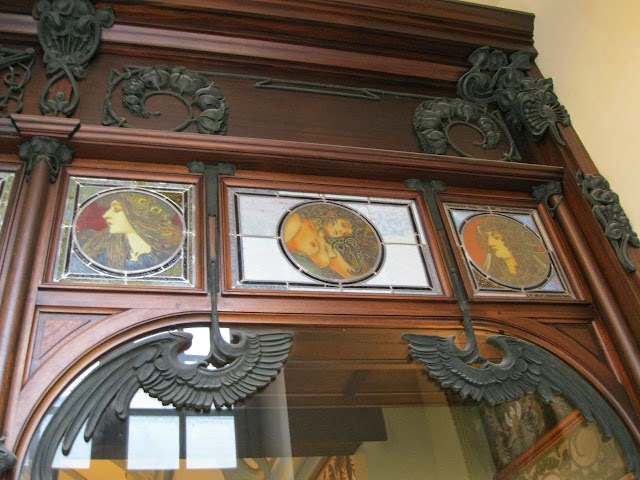The Musée Carnavalet is dedicated to the history of Paris and its inhabitants and houses from pre-historic times until the present day. A huge selection of works of art, momentos and models are on display in over 200 galleries, showing how the city looked in different eras and conjuring up its everyday life.
The museum is conatined within two adjoining townhouses from different eras. The Hotel Carnavalet is one of the most outstanding examples of architecture in the Marais district, begun in 1548, extended in 1578 with a courtyard and stables, and renovated by architect François Mansard (who popularised the Mansard style roof, so evocative of the Paris street-scape) in 1660. Purchased by the City of Paris in 1866 to house the municipal collections.
In 1989 the adjacent town house, Hotel Le Peletier Saint Fageau was purchased and the musée expanded around new walls, courtyards and gardens.
When Baron Haussman undertook the Renovation of Paris between 1853 and 1870 under Napoleon III's "Second Empire", he implemented an extensive program of urban planning, both in the centre of Paris and in the surrounding districts: streets and boulevards, regulations imposed on facades of buildings, public parks, sewers and water works, city facilities and public monuments. The planning was influenced by many factors, not the least of which was the propensity of the French to start street revolutions.
One of Haussman's requirements was that buildings should have street numbers. This required shopkeepers, whose customers were often illiterate to remove their historic signage. Signs had developed as descriptions of a merchant's business and were elaborate, clever and influential. Scissors would indicate a barbers shop; an elm tree would indicate the maker of fine tools, and griffons, fawns and black cats were popular.
A black cat on a semi-cicular moon was the sign for the legendary Chat Noir Caberat in Montmartre and is still used on postcards, coffee mugs and placemats in every souvenir shop. The gallerie pictured above was full of signs from buildings that were demolished around 1850 under Haussman's modernisation.

This is the full facade of an apothecary shop, reconstructed in the musée. It was saved when the building was demolished. It is lovely, dark-honey coloured polished stone. You can see an elm tree sign on the far wall.
When historic buildings were demolished or renovated, the best examples of interior pannelling were rescued and acquired for the museum, as a record of the interiors of Parisian houses of the period. These panels came from the townhouse of the duc d'Uzes on rue Monmatre, carved in 1767.
These panels are from the late 19th C and came from a ladies sitting room.
These are from the early 19th C.
Whole rooms were panelled using these decorated wooden panels, which added warmth as well as decoration.
Paintings like these two depicted Parisan life, activities and clothing.
The range of paintings was really impressive, chosen for their evocation of street life, home life, pastimes and styles of the Parisians. This was a very engaging street scene around 1890.
The grand interior of the ballroom of the Hotel de Wendel - from around 1925, and recreated here: all four walls complete with arches, as well as the ceiling. It was a huge room, enhanced by magnificent curtaining.
Also from the early 20th C, the entire facade and interior, including mosaic floor, of Monsieur G. Fouqet's jewellery store from rue St-Honoré.
Designed by Alphonse Mucha in the art nouveau style, in 1900.
But alas, time caught up with art nouveau and 30 years later M. Fouquet decided to renovate, completely removing all of this magnifient woodwork,
as well as the lighting, ironwork,
stained glass,
wrought iron,
and even the mosaic floor! Obviously, George wasn't short of a quid!
They shooed us out at 6pm when we were only half way through.
Well worth another trip though. Free entry, like all of the City of Paris musée with 5€ each for an excellent audio guide.
We managed to make it to the subway before the next downpour.

















No comments:
Post a Comment